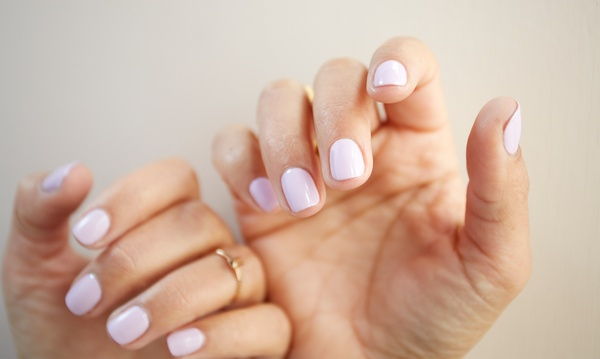Eyebrow waxing is a popular method of hair removal that involves using warm wax to remove unwanted hair from the eyebrows and surrounding areas. Here's what you need to know about eyebrow waxing:
-
Procedure: During an eyebrow waxing session, a trained esthetician or cosmetologist will apply warm wax to the eyebrow area using a small spatula or applicator stick. The wax is applied in the direction of hair growth and allowed to cool and harden slightly. A cloth strip is then pressed firmly onto the wax and quickly pulled off in the opposite direction of hair growth, removing the wax along with the unwanted hair.
-
Precision: Eyebrow waxing requires precision and attention to detail to achieve the desired shape and definition. The esthetician will carefully shape the eyebrows according to the client's preferences and facial features, taking into account factors such as brow arch, thickness, and symmetry.
-
Customization: Eyebrow waxing can be customized to suit individual preferences and styles. Whether you prefer a natural, groomed look or a more defined, sculpted shape, the esthetician can tailor the waxing treatment to achieve the desired results.
-
Benefits: Eyebrow waxing offers several benefits, including smooth and long-lasting results, precise shaping and definition, and the removal of multiple hairs at once. It can also help exfoliate the skin and remove dead skin cells, leaving the brow area looking smooth and rejuvenated.
-
Temporary Discomfort: While eyebrow waxing is generally well-tolerated, some individuals may experience temporary discomfort or pain during the procedure, particularly if it's their first time or if they have sensitive skin. However, any discomfort typically subsides quickly after the waxing is complete.
-
Aftercare: After eyebrow waxing, it's essential to follow proper aftercare instructions to minimize irritation and ensure optimal results. This may include avoiding sun exposure, applying soothing post-waxing products, and refraining from using harsh skincare products or makeup on the treated area for a short period.
-
Frequency: The frequency of eyebrow waxing depends on individual hair growth patterns and preferences. For most people, eyebrow waxing is typically done every two to four weeks to maintain the desired shape and keep the eyebrows looking groomed and tidy.
-
Safety Precautions: To ensure a safe and effective eyebrow waxing experience, it's essential to visit a reputable salon or spa that follows strict hygiene and sanitation practices. The esthetician should use clean and disposable tools, apply wax at the correct temperature, and perform a patch test to check for any allergic reactions or sensitivities.
Overall, eyebrow waxing is a popular and effective method of hair removal that offers precise shaping and long-lasting results. By following proper techniques and aftercare practices, you can achieve beautifully groomed eyebrows that complement your facial features and enhance your overall appearance.
A French manicure is a classic and timeless nail design characterized by a natural or nude-colored base with white tips. Here's everything you need to know about French manicures:
-
History: The French manicure was popularized in the 1970s and became a staple in nail salons worldwide in the 1980s. It was originally created by Jeff Pink, the founder of the nail care brand ORLY, as a versatile and elegant nail look suitable for any occasion.
-
Classic Design: The classic French manicure features a sheer, pale pink or nude polish applied to the entire nail bed, followed by white polish carefully painted along the tips of the nails. The white tips create a clean and polished look reminiscent of natural, healthy nails.
-
Modern Variations: While the classic French manicure remains popular, there are many modern variations and interpretations of the design. Some variations include colored tips (such as black, red, or metallic), glitter or shimmer accents, or alternative base colors (such as pale blue or soft lavender).
-
DIY vs. Professional: French manicures can be done professionally at nail salons or achieved at home with a DIY kit. While professional manicures offer precision and expertise, DIY kits are convenient and cost-effective for achieving a French manicure at home.
-
Techniques: Achieving the perfect French manicure requires precision and attention to detail. The white tips are typically created using nail guides or striping tape to ensure clean lines. Alternatively, some nail technicians use a white polish brush or nail art brush to freehand the tips.
-
Maintenance: French manicures are known for their longevity and versatility. The neutral colors make regrowth less noticeable, allowing the manicure to last longer between touch-ups. However, regular maintenance is still necessary to keep the nails looking fresh and polished.
-
Suitability for All Occasions: One of the key advantages of the French manicure is its versatility. It's suitable for a wide range of occasions, from everyday wear to formal events such as weddings or parties. The understated elegance of the French manicure makes it a timeless choice that complements any outfit or style.
-
Nail Health: French manicures can help promote nail health by protecting and strengthening the nails. The application of polish can provide a protective barrier against environmental damage, while regular maintenance encourages healthy nail growth.
-
Customization: French manicures can be customized to suit individual preferences and style preferences. Whether you prefer a classic, understated look or want to add a modern twist with unique colors or accents, there are endless possibilities for customizing your French manicure.
-
Timeless Appeal: Despite evolving nail trends, the French manicure remains a timeless and iconic nail design beloved by many. Its simplicity, elegance, and versatility have ensured its enduring popularity for decades.
There are several popular nail shapes, each with its own unique aesthetic and suitability for different preferences and lifestyles. Here are some of the most common nail shapes:
-
Square: Square nails have straight edges and a flat, squared-off tip. This shape is classic and versatile, suitable for both short and long nails. Square nails offer a clean and polished look, making them a popular choice for those who prefer a simple and timeless style.
-
Round: Round nails have curved edges and a rounded tip that follows the natural shape of the fingertip. This shape is soft and feminine, making it flattering for most nail lengths and finger shapes. Round nails are also less prone to snagging or breaking, making them a practical choice for everyday wear.
-
Oval: Oval nails are similar to round nails but feature a slightly elongated and tapered tip. This shape creates the illusion of longer fingers and is considered elegant and sophisticated. Oval nails are versatile and complement a wide range of nail lengths and styles.
-
Almond: Almond nails are narrow and tapered with rounded tips that resemble the shape of an almond. This shape elongates the fingers and creates a flattering and feminine appearance. Almond nails are popular for their elegant and chic look, although they may require some maintenance to prevent breakage.
-
Stiletto: Stiletto nails are long and pointed with sharp, tapered tips that resemble the shape of a stiletto heel. This shape is bold and dramatic, making a statement with its edgy and fierce appearance. Stiletto nails require regular upkeep and may not be practical for everyone due to their length and pointed tips.
-
Coffin or Ballerina: Coffin nails, also known as ballerina nails, are long and tapered with a flat, squared-off tip. This shape is similar to square nails but features sharper edges and a more dramatic taper towards the tip. Coffin nails are trendy and fashion-forward, often seen on celebrities and social media influencers.
-
Squoval: Squoval nails combine the straight edges of square nails with the rounded tip of oval nails. This shape offers the best of both worlds, providing the strength and durability of square nails with the softness and versatility of oval nails. Squoval nails are flattering for most nail lengths and are a popular choice for those who want a balanced and practical shape.
-
Ballerina: Ballerina nails, also known as coffin nails, are similar to stiletto nails but have a squared-off tip instead of a pointed tip. This shape resembles the shape of a ballerina's slipper, hence the name. Ballerina nails are long and tapered, creating a sleek and elegant look that's both modern and sophisticated.
-
Lipstick: Lipstick nails are similar to stiletto nails but feature a flat, squared-off tip instead of a pointed tip. This shape is reminiscent of the shape of a lipstick bullet, hence the name. Lipstick nails are bold and eye-catching, making a statement with their unique and edgy appearance.
-
Mountain Peak: Mountain peak nails are similar to stiletto nails but feature a more pronounced point at the tip. This shape resembles a mountain peak, with a sharp, tapered tip that extends slightly beyond the fingertip. Mountain peak nails are bold and dramatic, adding a touch of fierceness to any look.







